What is Anemia?
Anemia is a condition that affects millions worldwide, characterized by a lack of healthy red blood cells to carry adequate oxygen throughout the body. This oxygen deficiency can lead to fatigue, weakness, and other serious complications. While blood transfusions are the conventional treatment, some patients cannot receive them due to religious beliefs, medical contraindications, or rare blood disorders. In such cases, Hyperbaric Oxygen Therapy (HBOT) emerges as a potential alternative, enhancing oxygen delivery without requiring transfusions.

Understanding Anemia and Oxygen Debt
What is anemia? Anemia occurs when the body has insufficient hemoglobin, the protein in red blood cells responsible for oxygen transport. Without adequate oxygenation, the body enters a state of oxygen debt, leading to various symptoms, including:
- Persistent fatigue and weakness
- Rapid heart rate (tachycardia)
- Shortness of breath
- Dizziness and lightheadedness
- Pale or yellowish skin
- Headaches and difficulty concentrating
The severity of symptoms depends on the type and extent of anemia. Common causes include iron deficiency, chronic diseases, vitamin deficiencies, and blood loss from surgery or trauma.
How Hyperbaric Oxygen Therapy Helps in Treating Anemia
HBOT involves breathing 100% oxygen in a pressurized chamber, allowing oxygen to dissolve directly into the plasma. This process bypasses the need for red blood cells to transport oxygen, providing immediate relief from hypoxia (oxygen deficiency). The therapy is based on Henry’s Law, which states that increased pressure enhances the solubility of gases in liquids—in this case, oxygen in blood plasma.

Scientific Basis of HBOT for Anemia
Studies have shown that HBOT can temporarily replace the oxygen-carrying function of red blood cells, allowing patients to maintain oxygenation levels despite severe anemia. It has proven particularly useful in cases where blood transfusions are not an option.
Key Benefits of Hyperbaric Oxygen Therapy for Anemia Patients
HBOT provides numerous advantages for patients with anemia:
- Immediate Oxygenation Relief – Plasma oxygenation helps maintain vital organ function.
- Reduction in Symptoms – Patients report increased energy, reduced dizziness, and improved cognitive function.
- Support for Red Blood Cell Production – HBOT stimulates stem cell activity and may aid in the regeneration of red blood cells over time.
Scientific Evidence Supporting HBOT for Anemia
Landmark Studies:
- Boerema’s 1959 Study: One of the first studies demonstrating that humans can survive severe anemia solely through oxygen dissolved in plasma via HBOT.
- Case Report – Jehovah’s Witness Patient: A 35-year-old patient who refused a blood transfusion showed significant improvement in oxygen levels and symptoms after undergoing HBOT sessions.
- Research on Acute and Chronic Blood Loss Anemia: Studies have confirmed HBOT’s effectiveness in treating anemic patients who cannot undergo transfusions due to medical or personal reasons.
Who Can Benefit from Hyperbaric Oxygen Therapy for Anemia?
HBOT is particularly beneficial for:
- Patients refusing transfusions due to religious beliefs (e.g., Jehovah’s Witnesses).
- Individuals with hemolytic anemia or autoimmune disorders preventing transfusion compatibility.
- Post-surgical and trauma patients who have suffered significant blood loss but cannot receive donor blood.
Potential Risks and Limitations of HBOT for Anemia
While HBOT is generally safe, there are some potential side effects and limitations, including:
- Mild Barotrauma: Ear and sinus pressure changes due to increased atmospheric pressure.
- Oxygen Toxicity: Rare but possible with excessive HBOT exposure.
- Multiple Sessions Required: Patients may need frequent sessions for optimal results.
- Limited Availability: Access to medical-grade hyperbaric chambers is restricted to specialized centers.
Conclusion
Anemia can significantly impact daily life, especially when traditional treatments are not an option. Hyperbaric Oxygen Therapy offers a viable, non-invasive alternative for delivering life-sustaining oxygen, helping patients manage symptoms and improve overall health. If you or a loved one struggles with anemia and cannot undergo transfusions, HBOT may be the solution.
Experience Expert HBOT Care at Lakeshore Hyperbaric
Lakeshore Hyperbaric Chicago is the only facility in the city offering medical-grade hyperbaric chambers with full plexiglass construction and spacious interiors. Our chambers utilize 100% oxygen under pressure (up to 3.0 ATA), ensuring the highest standard of care for anemia patients and those requiring enhanced oxygenation.
At Lakeshore Hyperbaric, we specialize in personalized HBOT plans, working with patients to boost energy levels, enhance recovery, and improve cognitive function. Our center proudly collaborates with Chicago’s professional sports teams, providing cutting-edge therapies to optimize performance and wellness.
Read More: Hyperbaric Oxygen Therapy for Traumatic Brain Injury (TBI): Exploring HBOT Benefits and Recovery
Read More: HBOT for Delayed Radiation Injuries: A New Hope for Recovery
Read More: Oxygen Therapy in Stroke Patients: An Effective HBOT Treatment Strategy
Read More: Benefits of Hyperbaric Oxygen Therapy for Long COVID: A Promising Treatment?




